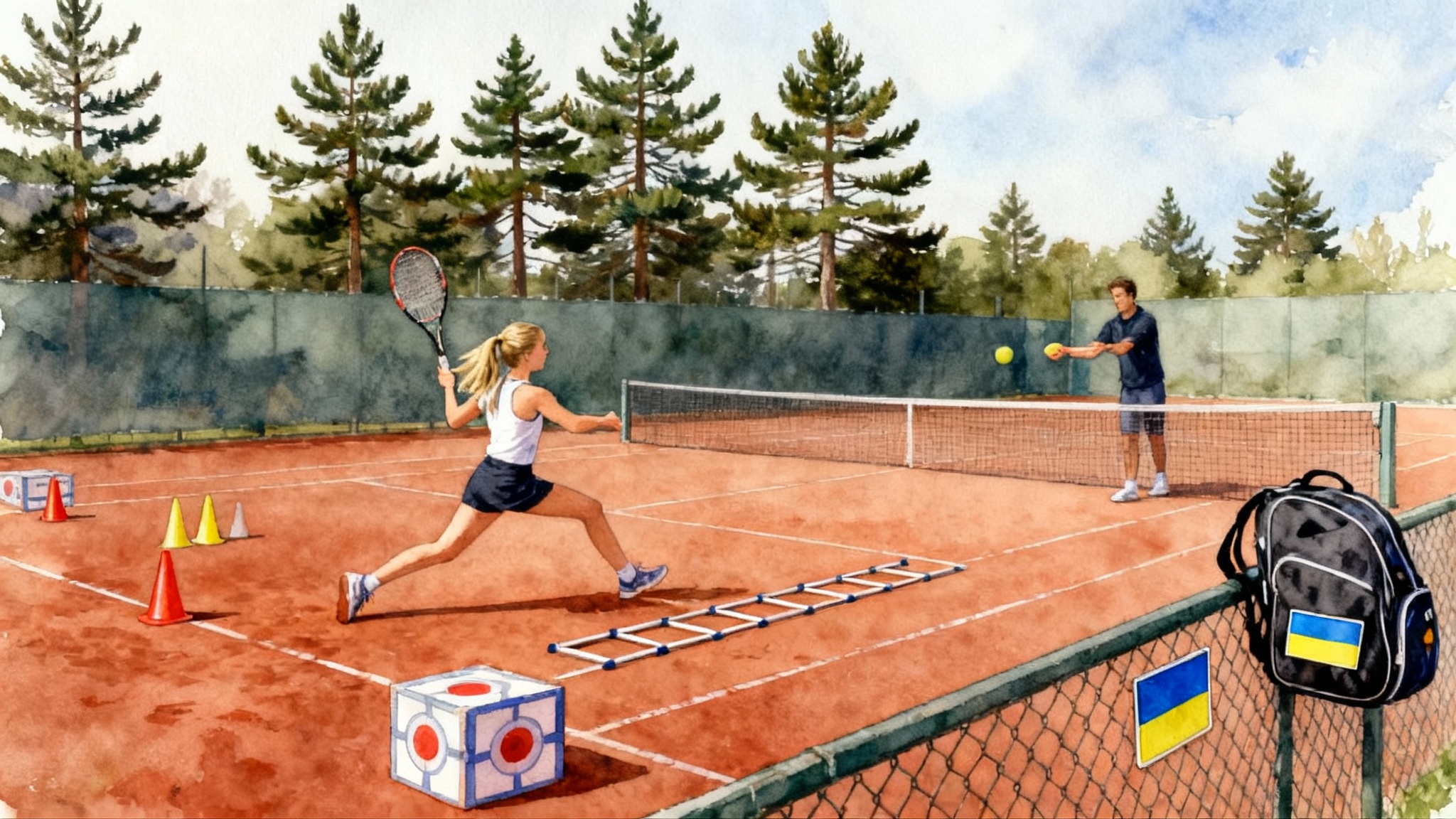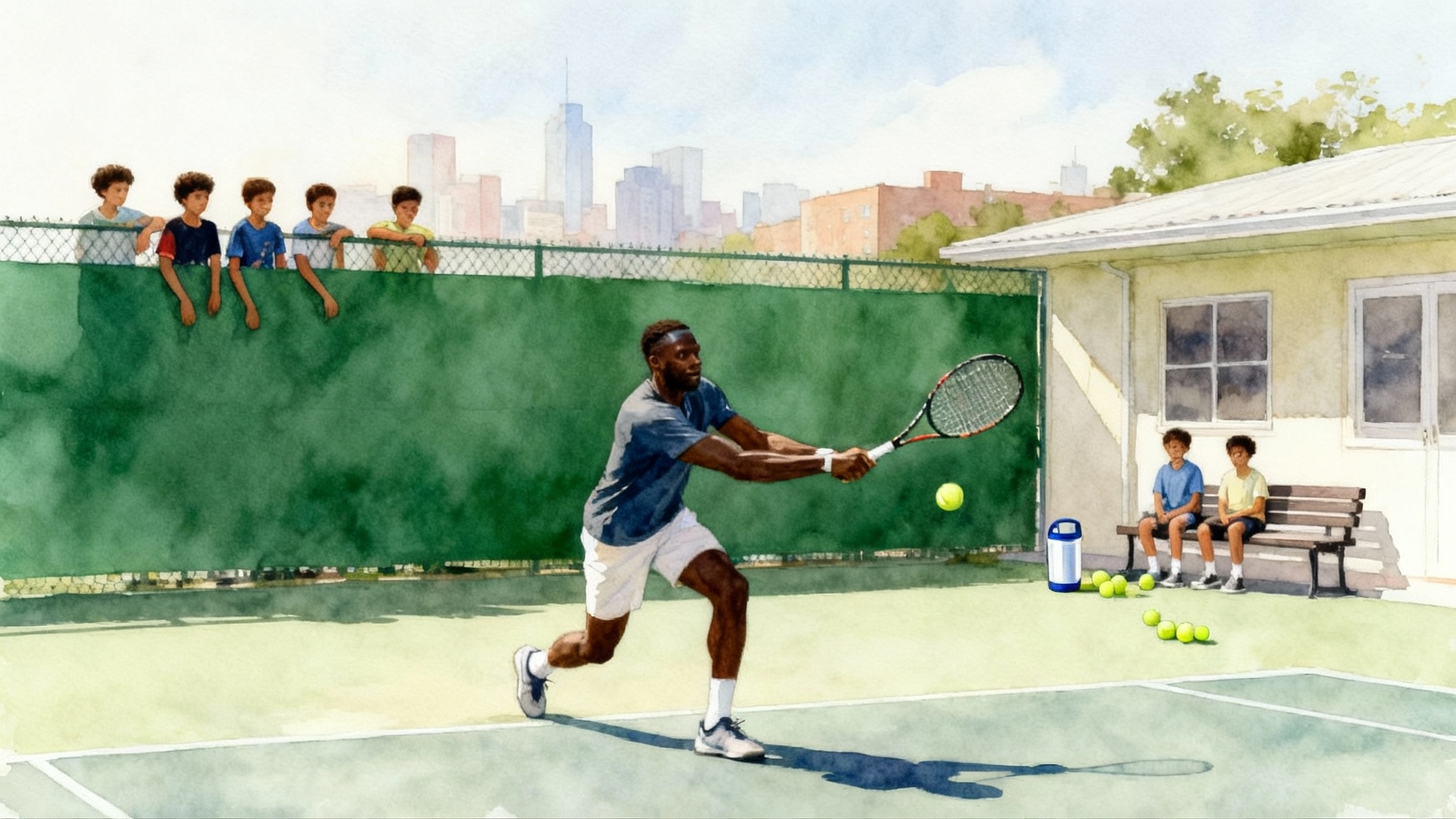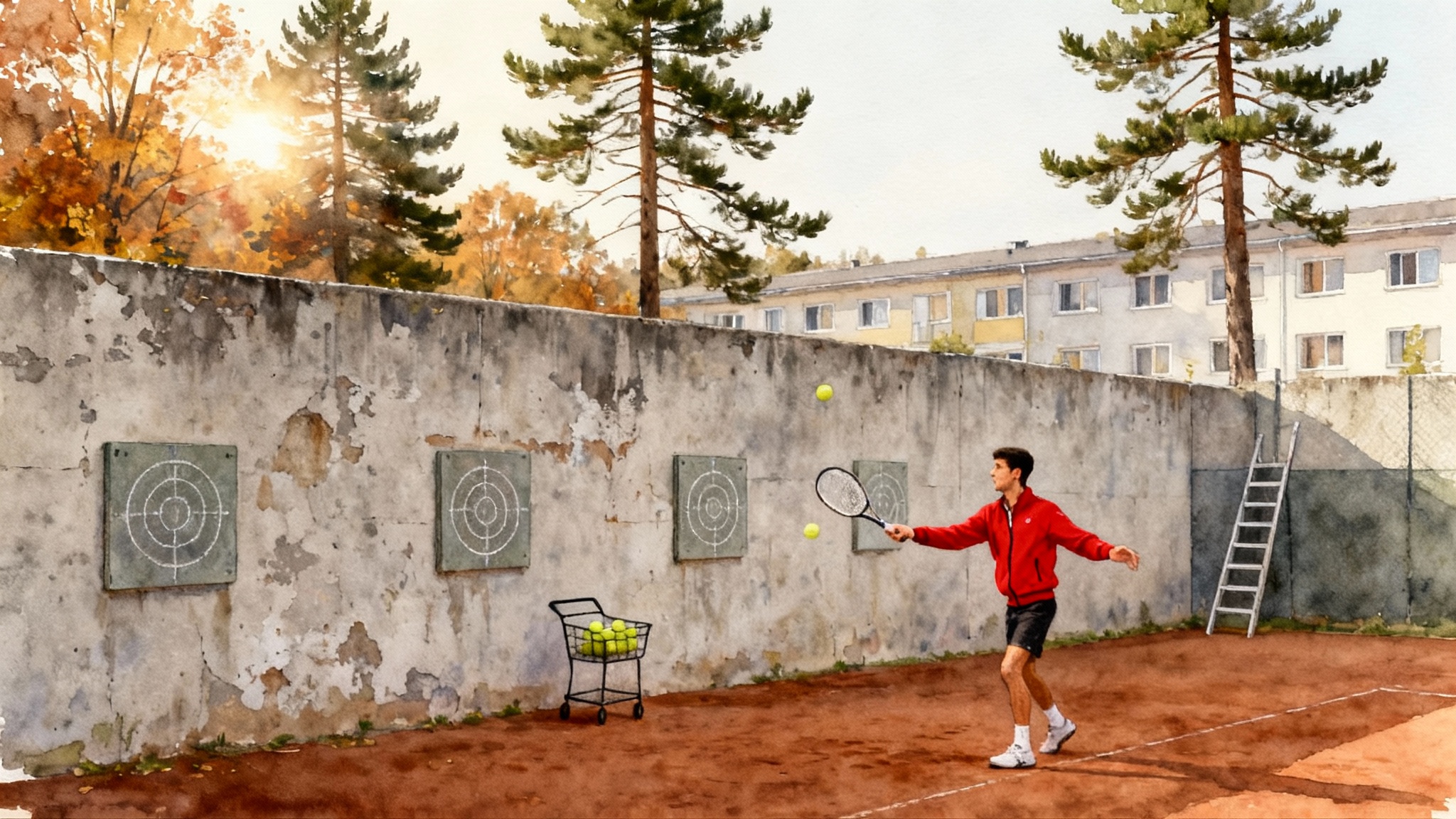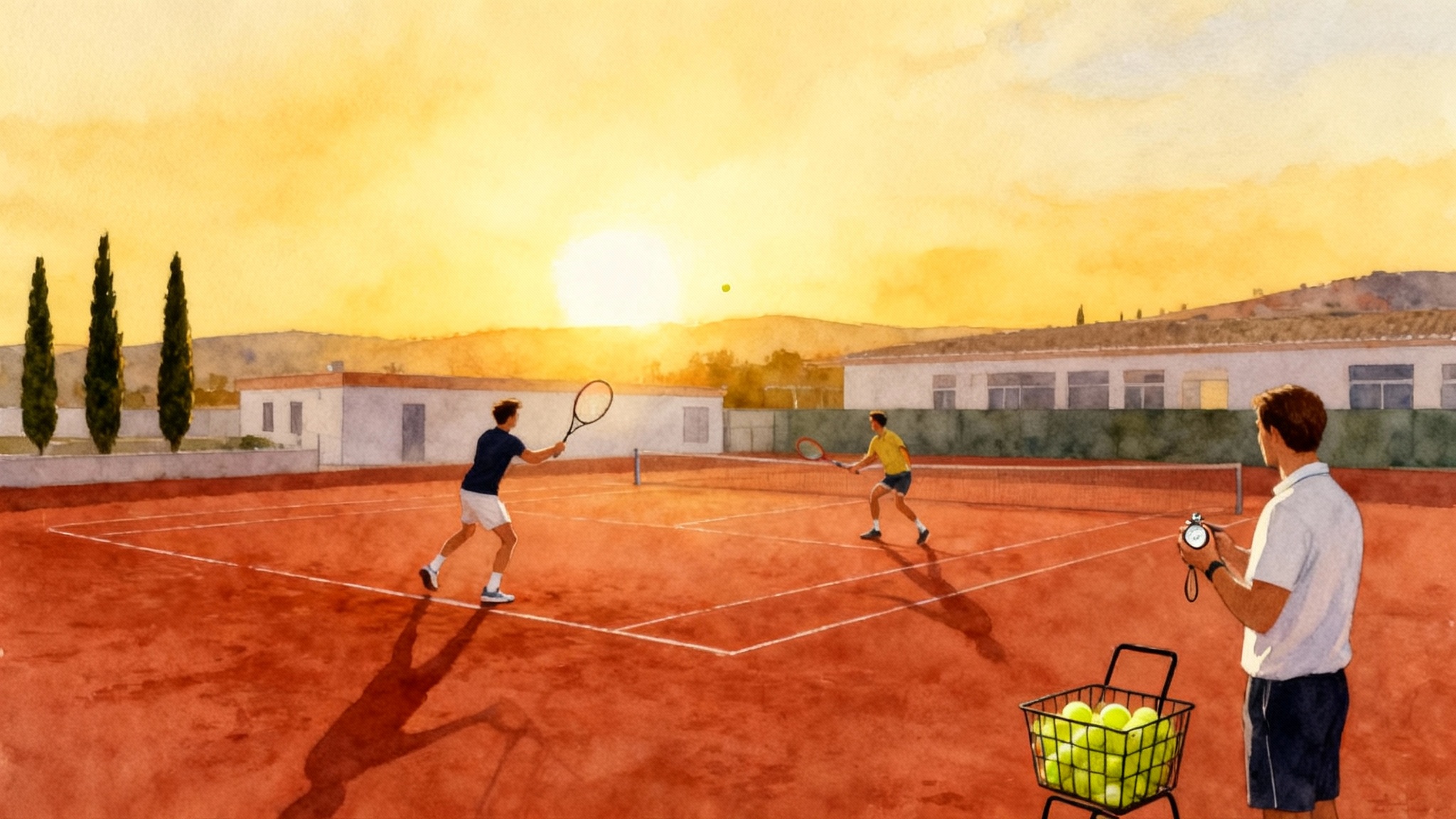How Evert Tennis Academy Forged Madison Keys’ 2025 Breakthrough
From Rock Island to Boca Raton to Melbourne, Madison Keys’ path ran through the Evert Tennis Academy. Here is how a move at age 10, all-court fundamentals, and smart coaching transitions set up her 2025 Australian Open win.

The blueprint began in Rock Island
Madison Keys’ story starts far from the Florida academies and Grand Slam spotlights. She was born in Rock Island, Illinois, and picked up a racquet after seeing Venus Williams on television. Within a few years, her parents faced a decision that confronts many families with a gifted child: keep a promising junior in the home routine or rebuild life around training. They chose the second path. By age 10, Keys and her mother relocated to Boca Raton so Madison could train at the Evert Tennis Academy, while her father maintained work back home to keep the endeavor viable. Similar Florida routes shaped other champions, as seen in Naomi Osaka’s Florida path.
Fifteen years later, the bet paid off in the most public way. On January 25, 2025, Keys defeated world No. 1 Aryna Sabalenka in a three-set classic to win the Australian Open, her first major title, after saving a match point in the semifinals against Iga Swiatek. The win capped a two-week demonstration of poise, power, and problem solving, including the coaching role played by her husband Bjorn Fratangelo and a simplified serving motion that held up under pressure, as detailed in the USTA recap of 2025 title.
This article unpacks the long arc behind that short awards speech: the early relocation, the technical and tactical foundation built with John and Chris Evert, and the coach and federation transitions that kept her identity intact while sharpening the edges. At every turn we translate choices into practical lessons for families, players, and coaches.
A 10-year-old’s leap and how to do it right
Moving at age 10 is not about chasing trophies next weekend. It is about fixing fundamentals before intensity locks in bad habits. The Keys family handled the move like an engineering project.
- Clarify the goal. The target was not winning the 12-and-under next month. It was building a game that could survive the blast furnace of a Grand Slam second week a decade later.
- Align daily life to the goal. In Boca Raton, schooling, sleep, and nutrition were fitted around court blocks, fitness, and recovery. The schedule was the skeleton of the plan.
- Keep decision rights tight. One head coach, one fitness lead, one performance plan. Many juniors sink not from lack of resources but from noisy decision making.
For parents, the lesson is to treat relocation as a systems change. If school logistics or commute times choke practice quality or recovery, the promise of a great academy cannot overcome a bad daily system.
The Evert method in practice: footwork first, clean shapes, all court
At Evert Tennis Academy, the tennis looks simple by design. John Evert’s teams are relentless about the building blocks that give big weapons a runway without sacrificing repeatability.
- Contact moves and recovery steps. Players learn how to create space before contact and reclaim court position after contact. This is how a heavy forehand becomes a pattern, not a coin flip.
- Early ball recognition. Drills cue the split step, first step, and shoulder turn so the stroke starts on time. Being on time reduces the need for compensations later in the swing.
- Clean swing shapes. Compact takebacks on the forehand and a two-handed backhand that stays inside the body line under pressure. Clean shapes lower the cost of decision errors.
- Transition competence. You see a lot of approach rhythm work at Evert. The goal is to add a safe lane to finish points when neutral pressure opens the court.
Watch Keys now and you still see those bones. Her first step into the forehand, the way the outside foot anchors the change of direction, and the ability to step forward into drive backhands are not late add-ons. They were installed early so power had rails to run on.
Two winter trophies that announced a prodigy
The move to Boca Raton put Keys into big Florida events where strong junior fields converge each winter. In late 2007, she won the Eddie Herr International 12-and-under title, then followed it weeks later with the Junior Orange Bowl 12s crown. A contemporaneous report by junior journalist Colette Lewis noted she took the prestigious titles back-to-back, underlining a pattern already clear in Boca practices: aggressive, early ball striking supported by better movement than her age peers, according to this 2007 Junior Orange Bowl recap.
The value of those wins was not the trophies. It was the rehearsal. Tournament weeks pressure test the base, reveal which technical skills hold late in matches, and teach young players how to reset after a bad patch. Keys learned to maintain aggression without rushing the finish, a theme that would matter in Melbourne years later.
From academy to federation: a support triangle that scales
As her results improved, Keys did stretches of work with United States Tennis Association Player Development in Florida while continuing to base much of her training at Evert. This two-pillar setup brought three benefits.
- Broader sparring. USTA camps and blocks introduce new looks, game styles, and court speeds, preventing a junior from solving only the problems they see every day at home base.
- Match management feedback. Federation coaches can provide tournament-specific insights on scouting and tendencies that complement academy fundamentals.
- Calendar and ramping. Coordinating the training calendar across academy, USTA blocks, and school produces intelligent peaks. The goal is not to peak for every event. The goal is to arrive fresh and prepared at the right ones. Similar coordination powered other climbs, such as the Piatti Academy and Sinner model.
Parents should think in triangles. The academy is the daily driver. Federation blocks add altitude and variety. Private coaching relationships keep the player’s identity intact as exposure rises.
Coaching handoffs without losing the player
Over the years Keys worked with different coaches, most visibly Lindsay Davenport during her first surge into the top 10 and, more recently, Bjorn Fratangelo. The pattern is instructive for families navigating change.
- Keep the main thing the main thing. Keys never abandoned her identity as a first-strike baseliner. New coaches refined decision rules instead of reimagining the player.
- Change one variable at a time. Under Fratangelo, Keys simplified her serve, tightened patterns behind the forehand, and adopted equipment tweaks that promoted control without dulling pop. Those are coordinated changes that target the same problem set.
- Build shared language. Good transitions keep the words for patterns and intentions consistent. Young players do not need a new dictionary with each coach.
The practical tip for parents is to run a check before any coaching change: can the candidate coach show how they will reinforce your child’s core strengths while addressing recurring losses in a measurable way. If they cannot, keep looking.
Melbourne 2025: the payoff of a 15-year plan
Keys’ Australian title was not an overnight revelation. It was the moment when early decisions aligned with present execution.
- Movement bought her time. Against faster defenders and counterpunchers, she could reset the point with her feet, not only her forehand. That is the Evert movement focus paying dividends.
- Patterns survived pressure. The forehand into the backhand corner followed by a backhand line change did not disappear at 5–all in the third set. Clean swing shapes hold under stress because the brain has fewer emergency choices to make.
- A serve that starts points on her terms. The simplified motion and better locations set up the first strike without needing a perfect delivery. Second serves that land patterns are a quiet superpower late in majors.
At a glance it looked like bravery. Under the hood it looked like the habits of 10,000 well-chosen reps.
What parents can copy and what to avoid
- Choose constraints, not hype. Keys’ parents chose an environment that constrained daily behaviors in the right direction. Small coach-to-player ratios, punctual practices, and fitness that matched on-court intentions beat slogans every time.
- Move only if the system improves. A relocation is justified when the daily training and recovery loop gets clearly better. If the change simply trades longer drives for higher-priced courts, stay put and invest in local coaching depth.
- Centralize calls. One person owns the player plan. Everyone else, including well-meaning specialists, supplies input without creating whiplash.
- Track skills, not results. Use a weekly scorecard for controllable skills: first-serve location percentage, backhand line-change success on neutral balls, plus-one forehand depth. If those trend up, match results will follow.
- Protect identity. If your player’s superpower is first-strike offense, do not chase a defensive identity because of a two-match losing streak. Improve the movement and accuracy that support the superpower.
A week at Evert, translated into a template you can use
You do not need to live in Boca Raton to borrow the structure that made Evert famous. Here is a simplified model that families and coaches can adapt. Comparable structure helped other ascents, for example how JC Ferrero Equelite forged Alcaraz.
Monday
- Morning: Technical block on movement and spacing. Two-ball spacing drill into open stance forehand, then recovery to neutral. Finish with short approach and first volley rhythm.
- Afternoon: Fitness block on acceleration and deceleration. Medicine ball throws, resisted first steps, and eccentric lunges to train braking.
Tuesday
- Morning: Serve and plus-one patterns. Serve wide deuce, backhand line change on the second ball. Vary to T serve ad, inside-out forehand behind it.
- Afternoon: Set play practice. Play half-court games where a short ball must be finished inside three shots. The constraint builds commitment to transition.
Wednesday
- Morning: Backhand stability under pressure. Crosscourt heaviness, then call line changes on coach’s whistle. Record line-change percentage and depth.
- Afternoon: Recovery day with mobility circuit and light hitting. Make recovery a scheduled skill, not a reactive fix.
Thursday
- Morning: Return games. Focus on first step and contact height. Alternate chipped neutral returns and aggressive drive returns based on server’s mix.
- Afternoon: Anaerobic court sprints and pattern rehearsal under fatigue. Build the ability to choose the right pattern when legs are heavy.
Friday
- Morning: Point construction scenarios. Coach feeds patterns that demand a one-two finish or a three-ball cage, depending on ball height. Score tactical choices, not just points won.
- Afternoon: Film session with annotation of two key patterns that broke down this week and two that held up. Adjust next week’s plan accordingly.
Saturday
- Match play or tournament. Apply the week’s focus and review only the pre-chosen skill metrics afterward.
Sunday
- Full rest or light mobility. Write next week’s goals with coach in 10 minutes. If it takes longer, the plan is too vague.
Drill kit: five simple reps that scale from juniors to pros
- Split–first step–shoulder turn ladder. Player splits on coach’s clap, executes first step to a marked cone, completes shoulder turn, and shadow swings to contact point. Do 8 reps each side at game speed.
- Outside foot anchor forehands. Feed medium pace crosscourt. Player uses outside foot to load, hits crosscourt heavy, recovers with two shuffle steps. Alternate every 6 balls to down-the-line with the same footwork.
- Approach rhythm to first volley. Feed short neutral ball. Player plays approach with margin, splits at service line, goes through first volley to big target. Score only first volley depth.
- Backhand line change under a time cue. Crosscourt rally. Coach calls “line” randomly. Player changes down the line with a playable margin. Misses long are acceptable, net misses are not.
- Serve location ladders. Three serves to wide spot, three to body, three to T on each side. Second serves must hit the back third of the box or do not count. Track location rather than aces.
Each drill mixes biomechanics with tactical intention. The form is there to make the decision easier at real speed.
The long view on early relocation
A move at 10 is a family decision more than a tennis decision. Keys’ case shows the parts that matter most.
- Household roles and runway. One parent may need to shift careers or location. Agree on a runway in years, not months, before deciding whether to extend.
- School integration. The goal is not less school. It is a schedule that reduces friction with training blocks and travel. Online or hybrid models should be chosen for fit, not fashion.
Think of relocation as installing a new operating system. If the new system runs the everyday routines better, the competitive benefits will emerge.
What the 2025 title proves, and what it does not
It proves that clean foundations outlast style cycles. Tennis keeps getting faster, yet the fundamentals that carried Chris Evert on clay and a teenage Keys in junior finals still underpin a modern first-strike game at Rod Laver Arena.
It does not prove that every 10-year-old should move. Many players reach top levels through strong local coaching plus targeted travel blocks. What you can take from Keys is not the zip code but the structure: a clear identity, a schedule that supports it, and a small team that keeps the main thing the main thing.
Conclusion: a straight line drawn in arcs
From Rock Island’s park courts to Boca Raton’s practice blocks to Melbourne’s trophy lift, Keys’ path looks linear only in hindsight. In real time it was an arc of repeated basics, small adjustments, and tough choices that favored long-term structure over short-term noise. That is the quiet magic of the Evert approach. Build the feet. Simplify the swings. Choose clear patterns. Then let a player who knows herself keep drawing that same line on the sport’s biggest canvases.








